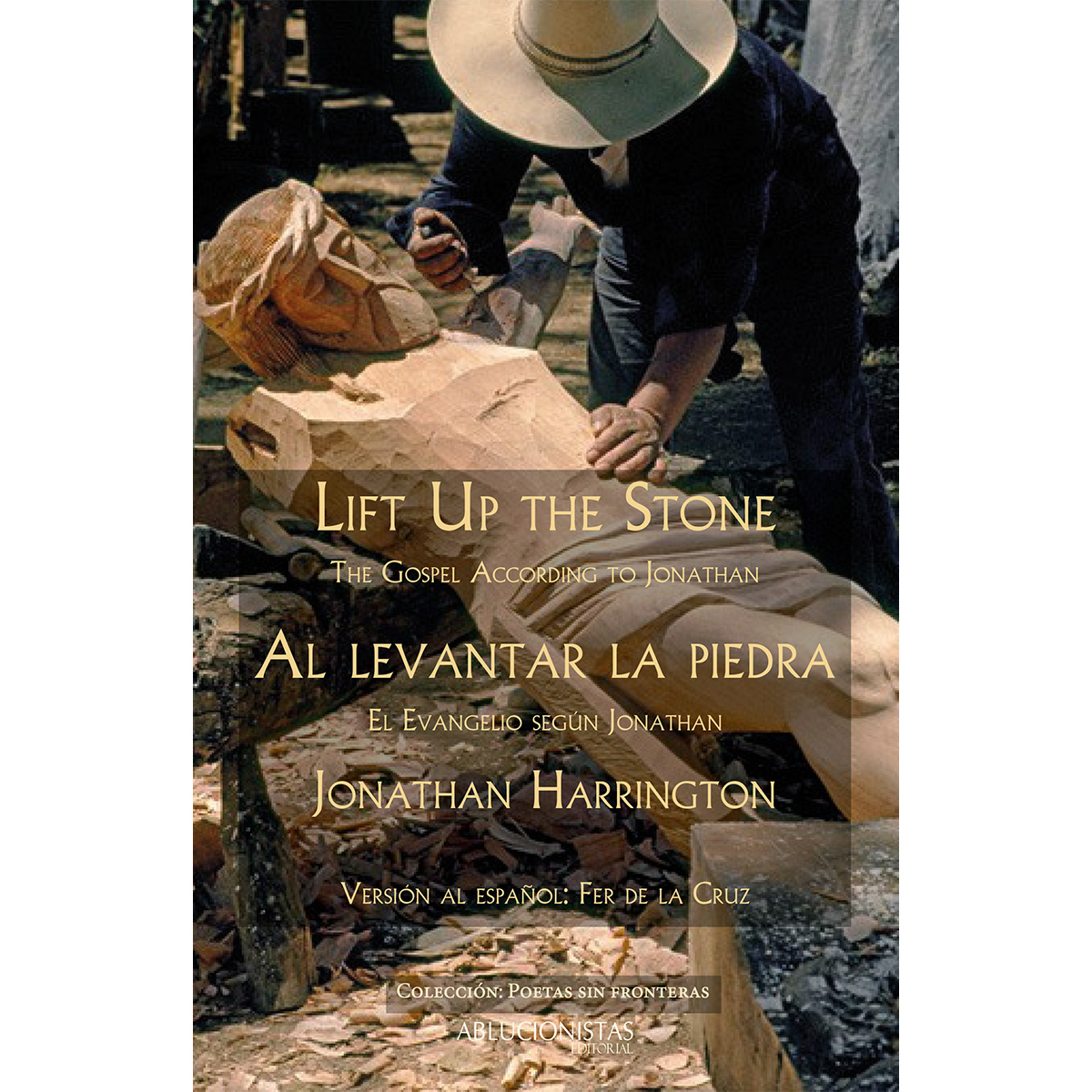
Lift Up The Stone | Al levantar la piedra
$ 219 MXN
Autor: Harrington, Jonathan
ISBN: 9786079858261
Edición: 1
Sello: Ablucionistas Editorial
Colección: Poetas sin Fronteras
Código: 9786079858261
Editorial: Ablucionistas
Translators Note Among the nearly infinite number of artistic recreations of the New Testament, today we notice how da Vinci omitted the olive complexion and other Semitic features of the characters of the The Last Supper, and Hellenized them, making them Caucasian, even blond in some cases. The contemporary recreation by the Belizean artist Richard Holder seems more relevant to me, in todays context. His spectacular The Last Supper (Xposure Devine, 2005), shows us a Jesus Christ with flowing dreadlocks, sharing bread among his disciples of African descent, at a table full of pineapples, pumpkins and jícaras. This beautiful gospel according to Jonathan Harrington is a similarly authentic and thought-provoking recreation. These poems are not religious in the traditional sense. Although they do adhere to the sequence of events narrated in the Gospel of Matthew. Harrington’s gospel juxtaposes time and history, setting many of the acts of Jesus within the context of the present-day conflict within the Middle East, specifically, in Israel and Palestine where Jesus was born, died and also resurrected according to faith. All of the poems are dramatic monologues told from the point-of-view of main players in Matthew or from minor or invented characters. They attempt to capture the humanity of these characters that is so often glossed over by conventional religious doctrine. In Harrington’s sonnets, Jesus, his mother and his disciples are, above all else, flesh and blood men and women. In these forty post-modern blank verse sonnets, Harrington recreates the voices of characters such as a friend of the soldier, Longinus, the wife of Pilate, The Good Thief’s Sister, even a dog ... as well as various unnamed witnesses to the miracles and wonders of the good Rabbi Jesu ben Josef. In doing so, he returns the Hebrew names to the biblical characters, recreates life in a territory wounded by war, and endows those who continue to suffer in the Holy Land with flesh and bone and voice and face. Even the all too human weakness of the Roman governor, Pilate, is exposed. Pilate admits that this rabbi they call the Christ has done no wrong. Yet Pilate, by his failure to act, like all of us who recognize injustice but do nothing to rectify it, dooms the innocent rabbi to death at the hands of Roman soldiers. Harrington’s sonnets open our eyes to a new way of reading the gospels and they open our hearts wide, through centuries, beyond borders and beliefs. The Spanish translation has been a challenge, an honor and a pleasure. On some occasions it was possible for me to recreate the recurring iambic pentameter in the original, but I also chose to rely on free verse to render a more authentic version of each poem in Spanish. Regardless of language, this wonderful cycle of sonnets fosters brotherhood and sisterhood among historically antagonistic peoples everywhere, who, nevertheless, can still achieve through poetry, the miracle of reconciliation. Fer de la Cruz Mérida, México Nota del traductor Entre la infinidad de recreaciones artísticas de los pasajes del Nuevo Testamento, hoy notamos cómo Da Vinci omitió la tez oliva y demás rasgos semíticos de los personajes de la Última cena, y los helenizó volviéndolos caucásicos, incluso rubios. En el contexto de hoy, me parece más relevante la mirada del artista beliceño Richard Holder, cuya espectacular Última cena (Xposure Devine, 2005), nos muestra un Jesucristo con rastas frondosos, compartiendo el pan entre sus discípulos de ascendencia africana, en una mesa hermosa servida de piñas, calabazos y jícaras. Este hermoso evangelio según Jonathan Harrington es una recreación así de válida y así de sugerente. Estos poemas no son religiosos en el sentido tradicional, aunque se adhieren a la secuencia de eventos narrados en el Evangelio de Mateo. Este de Harrington yuxtapone tiempos e historias, ubicando los hechos de Jesús en el contexto del conflicto actual en el Oriente Medio, particularmente en Israel y Palestina, donde nació, murió y, de acuerdo con la fe, resucitó. Todos los poemas son monólogos dramáticos desde el punto de vista de los actores principales en el recuento de Mateo, o de personajes menores inventados. Cada poema intenta capturar la humanidad de estos personajes, cuya importancia es minusvalorada por la doctrina religiosa convencional. En ellos, Jesús, su madre y sus discípulos son, sobre todo, hombres y mujeres de carne y hueso. En sus cuarenta sonetos posmodernos en endecasílabo blanco, Harrington recrea las voces de personajes reales y ficticios, como el amigo del soldado Longino, la esposa de Pilato, incluso un perro… así como diversos testigos sin nombre de los milagros y prodigios del buen rabino Jesu ben Josef. Al hacerlo, les devuelve los nombres hebreos a los personajes bíblicos, recrea la vida en un territorio herido por la guerra y dota de voz y rostro, de modo alegórico, a quienes siguen sufriendo en Tierra Santa. Incluso las debilidades tan humanas del gobernador romano se revelan, cuando Pilato admite que este rabino, a quien llaman el Cristo, es un hombre inocente. Aún así, la inacción de Pilato lo condena, como todos quienes reconocemos la injusticia social sin hacer nada para remediarla. Los sonetos de Harrington nos muestran una lectura diferente de los evangelios, tocándonos los ojos para abrir de par en par los corazones, a través de los siglos, más allá de fronteras y creencias. La traducción al español ha sido un reto, un honor y un placer. En algunas ocasiones me fue posible recrear el pentámetro yámbico recurrente en el original, pero opté por basarme en el verso libre para mejor trasvasar al español cada poema. Sin importar el idioma, este ciclo virtuoso de sonetos fomenta fraternidad/sororidad entre los pueblos históricamente antagónicos, pero que aún pueden alcanzar, en la poesía, el milagro de la reconciliación. Fer de la Cruz Mérida, México
